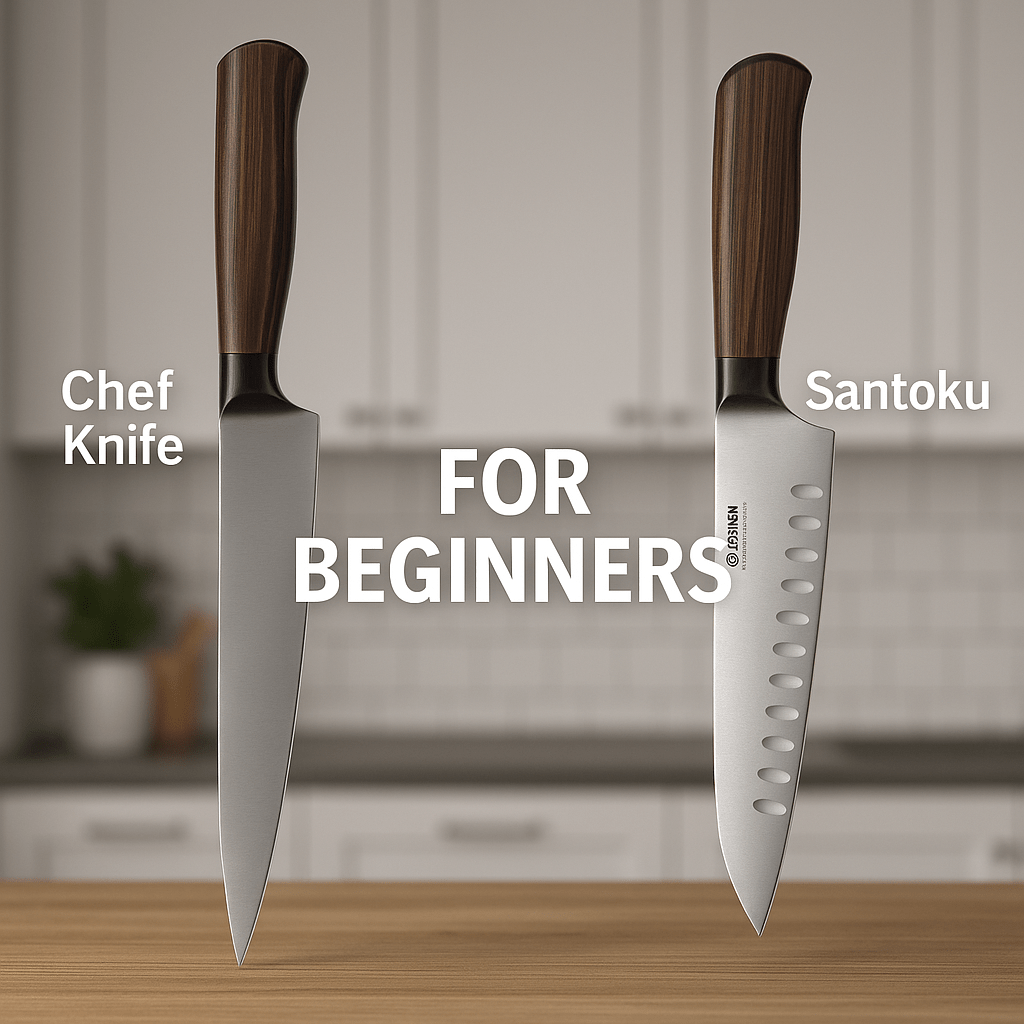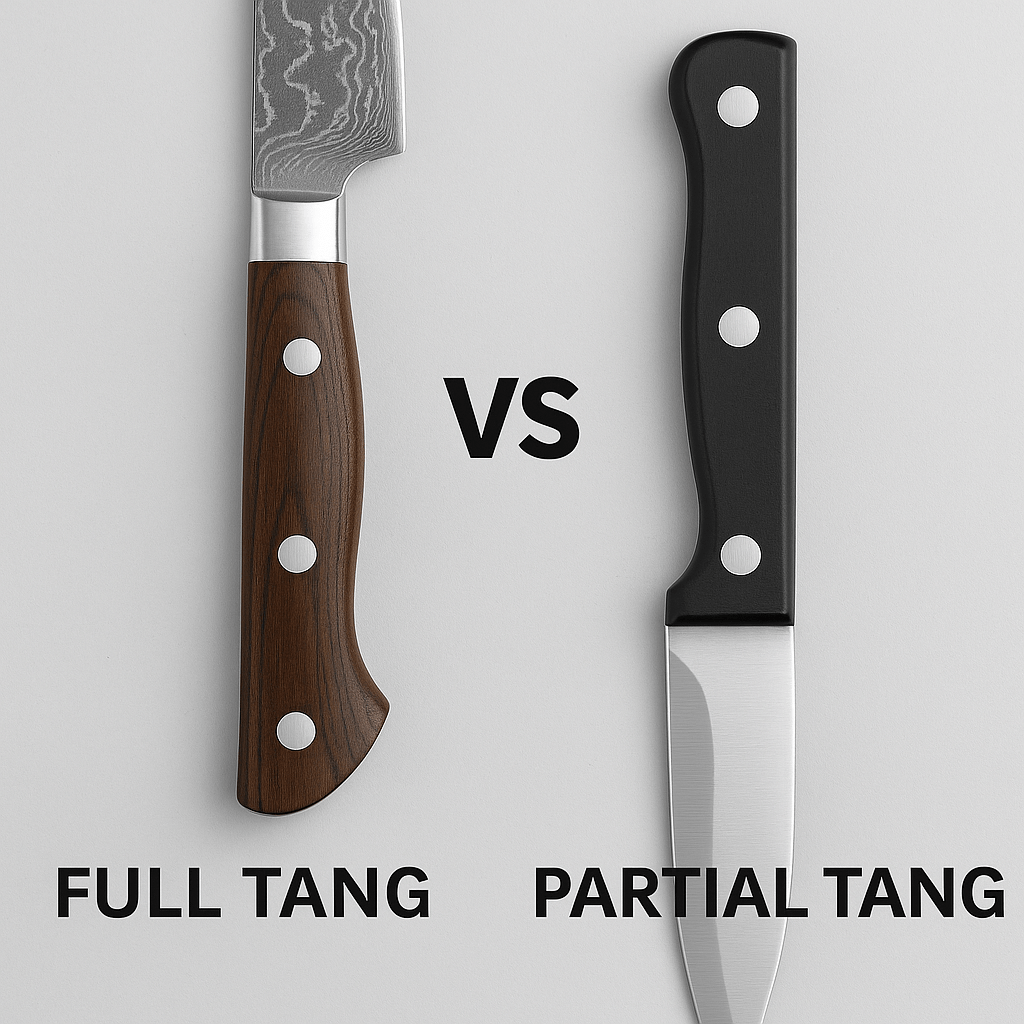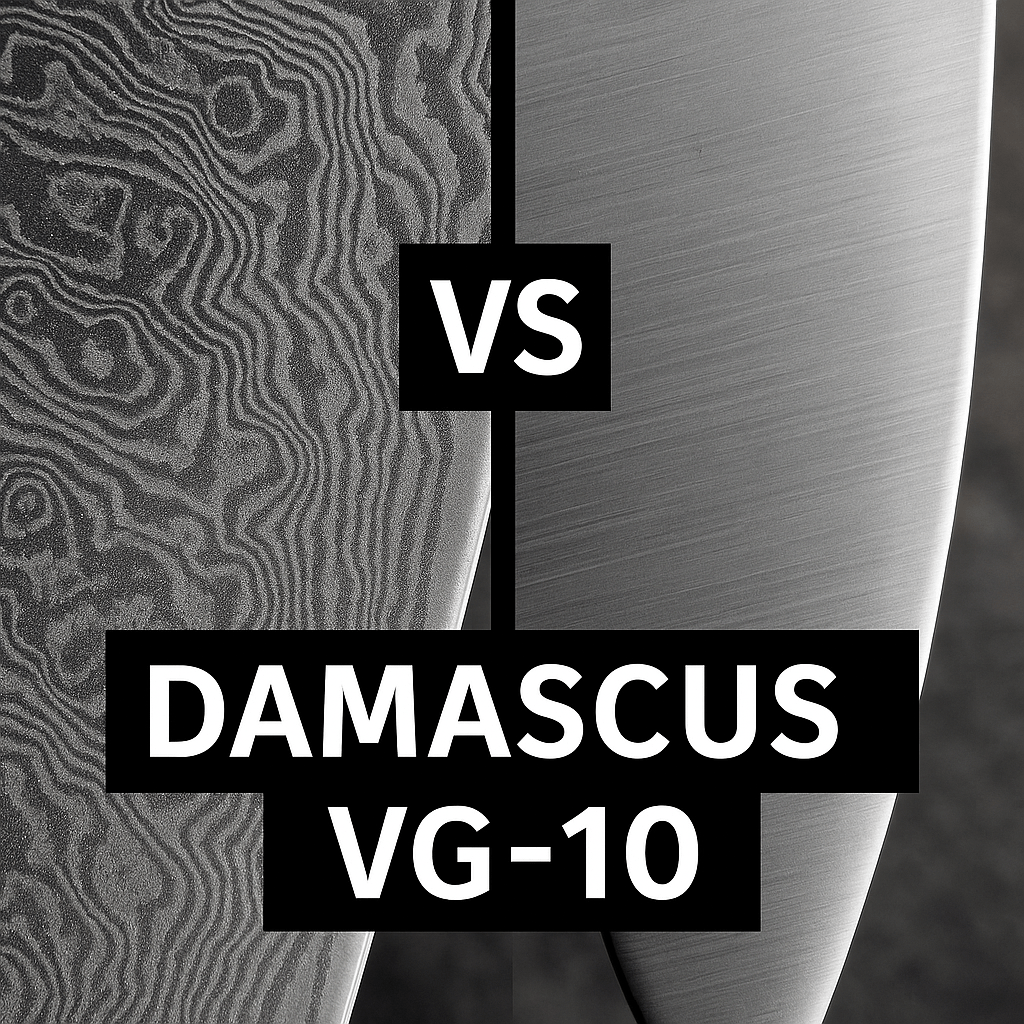
Chef Knife vs Santoku for Beginners – Buying Guide
When you’re buying your first high-quality kitchen knife, two names always come up: the Chef Knife and the Santoku Knife. Both are incredibly versatile, but each carries its own story, design philosophy, and best use cases. So, which one should a beginner choose?
Understanding Their Origins
The Chef Knife (Gyuto in Japanese) originates from Western culinary tradition, especially in France and Germany. It’s an all-purpose knife meant for slicing, chopping, and mincing almost anything.
The Santoku Knife, on the other hand, comes from Japan. The name “Santoku” means “three virtues” — typically slicing, dicing, and mincing. It was designed for the modern Japanese home cook, who needed a smaller, lighter, and more balanced alternative to the Western chef knife.
Blade Shape and Design
The most noticeable difference between the two is their shape:
- Chef Knife: Features a curved blade with a pointed tip, ideal for a rocking motion when chopping. Blade lengths range from 8 to 10 inches.
- Santoku Knife: Has a flatter edge and a rounded “sheep’s foot” tip. The shorter 7-inch blade is perfect for precise up-and-down slicing.
Because of these design differences, the Chef Knife feels more dynamic, while the Santoku offers superior control and precision.
Cutting Experience and Comfort
If you enjoy the rhythmic motion of rocking cuts (like chopping herbs or mincing garlic), the Chef Knife will feel more natural. Its longer blade and curve let you slice through larger ingredients efficiently.
The Santoku Knife excels at delicate, straight cuts. It’s lightweight and balanced, making it ideal for beginners or home cooks with smaller hands. The thinner Japanese-style blade glides through vegetables, meats, and fruits with minimal resistance.
Performance and Maintenance
Western Chef Knives are often made from softer stainless steel, which makes them easier to sharpen but less likely to hold an edge for long. Japanese Santoku knives, especially those made from VG-10 Damascus steel like OSERM’s, have harder steel and sharper edges that last longer.
- Chef Knife Pros: Excellent for heavy-duty work, rocking motion cutting, and professional kitchens.
- Chef Knife Cons: Heavier, may feel intimidating for beginners, requires more control.
- Santoku Pros: Lighter, sharper, great for vegetables and precise slicing.
- Santoku Cons: Less effective for large ingredients or tough bones.
Which Knife Should Beginners Choose?
For most home cooks, the Santoku is the ideal first knife. It’s easy to handle, sharp, and safer for everyday use. The shorter blade reduces the risk of accidents and gives a better sense of control.
However, if you cook large meals or prefer the Western cutting style, the Chef Knife offers unmatched versatility. Many professional chefs use both — Santoku for delicate tasks, and Chef Knife for heavier prep.
OSERM’s Recommendation: Start Smart, Upgrade Later
At OSERM, we always recommend starting with what feels comfortable, not just what looks impressive. Our 7” Santoku Knife and 8” Chef Knife both feature VG-10 core Damascus steel and ergonomic resin-wood handles for a perfect balance of sharpness, comfort, and elegance.
Once you’ve mastered one, adding the other expands your skills and confidence in the kitchen — just like a craftsman adding new tools to his art.
Final Thoughts
Whether you choose a Chef Knife or a Santoku, the key is quality and comfort. Both are essential tools that elevate your cooking experience — and with OSERM’s Japanese craftsmanship, you’ll feel the difference in every slice.
Weekly Deal 🔥
Experience the precision of Japanese craftsmanship. Explore OSERM’s Damascus Chef and Santoku knives — beautifully balanced, gift-ready, and built to last.
Shop the OSERM Knife Collection →
You Might Also Like
- Chef Knife vs Santoku – Which Should You Choose?
- How Many Knives Do You Really Need in the Kitchen?
- Why Every Home Cook Should Own a Santoku Knife
Tags: chef knife vs santoku, japanese knife guide, OSERM knives, beginner knife buying guide, Damascus kitchen knives






